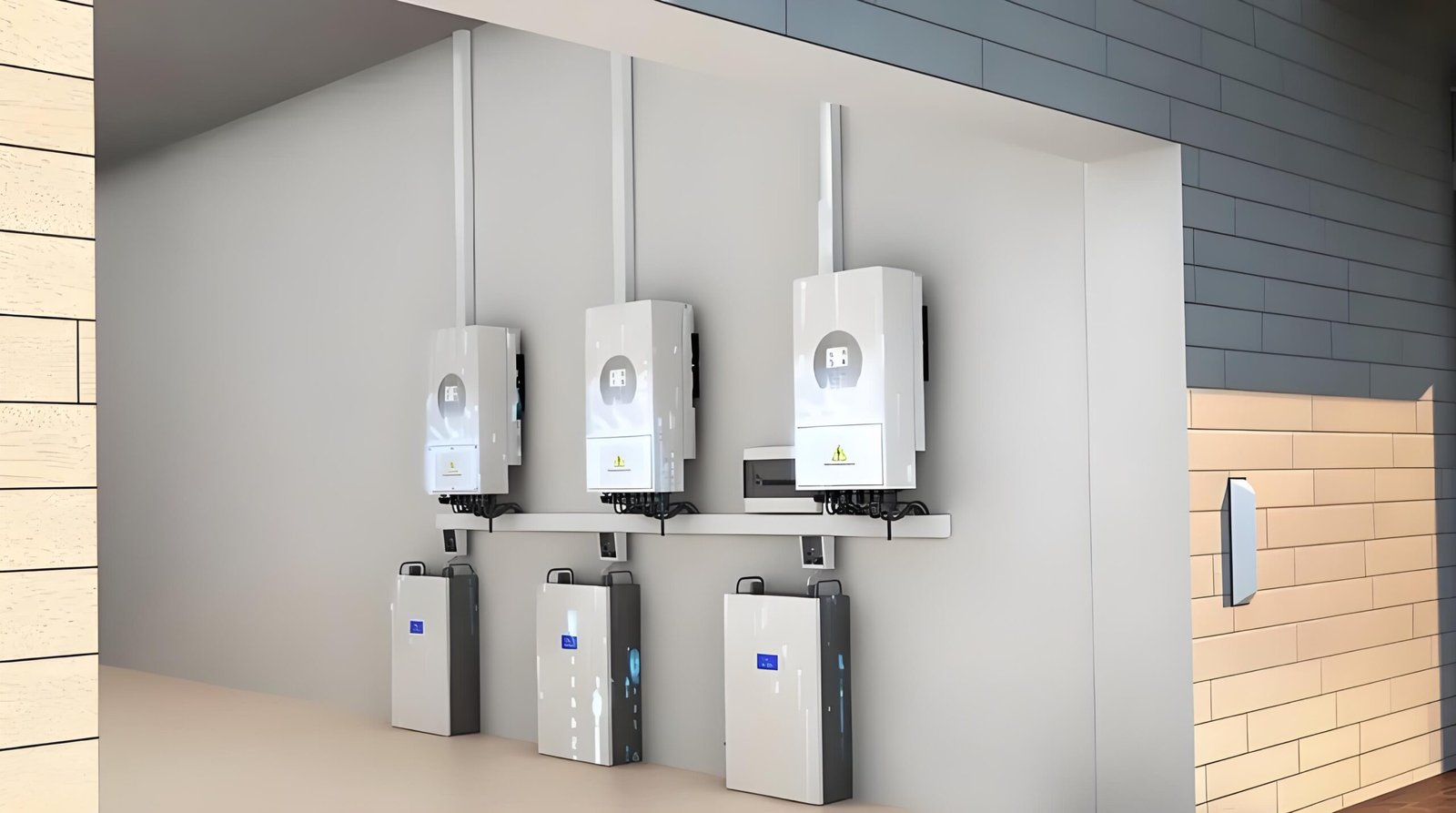Installing inverters and batteries inside the house can be safe, provided that you follow certain guidelines related to ventilation, safety standards, and proper placement. In this guide, we’ll explore the considerations and best practices to ensure that your indoor installation is both effective and secure.
Inverter Safety
Understanding the safety of inverters when installed indoors is crucial. Inverters generate heat and require adequate ventilation to ensure safe operation.

Type of Inverter
Different types of inverters have distinct installation requirements based on their size and heat output:
- String Inverters1: Typically larger and require better ventilation, making them more suitable for outdoor installation.
- Microinverters2: Smaller in size and generally safer for indoor use as they generate less heat.
- Hybrid Inverters3: These inverters, commonly used in solar battery systems, can often be installed indoors if there’s enough space, ventilation, and temperature control.
Ventilation and Airflow
Proper ventilation is critical. Inverters, especially string and hybrid models, can overheat without proper airflow. Ensure the room has adequate air circulation to prevent overheating and system malfunction.
Accessibility and Maintenance
Choose a location that is easy to access for regular maintenance and monitoring. Ensuring that the inverter is placed where you can reach it easily will help keep the system functioning smoothly and allow for routine checks.
Battery Safety
Batteries also require special consideration for indoor installation. Their safety depends on the type of battery, ventilation, and temperature control.

Type of Battery
The battery type determines its suitability for indoor use:
- Lead-Acid Batteries4: Flooded lead-acid batteries release gases like hydrogen, which are flammable and pose a risk in poorly ventilated spaces. Sealed lead-acid batteries are safer but still need ventilation.
- Lithium-Ion Batteries (LiFePO4)5: Lithium-based batteries are much safer for indoor use. They produce fewer gases and are less prone to leakage, though they still need proper installation to avoid overheating or short-circuiting.
- Nickel-Cadmium Batteries6: Less common but can be hazardous due to their chemical composition.
Ventilation and Fire Risk
Batteries generate heat during operation, particularly lead-acid ones. It’s essential to ensure proper ventilation to reduce overheating risks. Lithium-ion batteries, while safer, still require adequate airflow and a fire-resistant enclosure.
Temperature Control
Temperature stability is key for battery performance. Batteries operate best in a room that stays between 0°C (32°F) and 25°C (77°F). Avoid placing them in areas with extreme temperature fluctuations.
Proper Storage and Spacing
Ensure there is enough space around both the inverter and battery for airflow, maintenance, and safety. Follow the manufacturer’s guidelines on spacing to prevent any heat buildup.
Key Considerations for Safe Indoor Installation
Following these key considerations will ensure your indoor installation meets safety standards and operates effectively.

Installation by a Professional
It is essential to have a qualified, licensed electrician install both the inverter and battery. A professional will ensure that the system is correctly wired, meets safety standards, and complies with local regulations.
Compliance with Local Codes
Check your local building codes for specific rules regarding the indoor installation of inverters and batteries. Some regions have strict requirements for ventilation, fire safety, and electrical connections.
Fire Safety
Consider installing smoke detectors and fire extinguishers in the room where the inverter and battery are located. Choose a fire extinguisher rated for electrical or lithium fires to ensure safety in case of an emergency.
Battery Management System (BMS)
A Battery Management System (BMS)7 is crucial, particularly for lithium-ion batteries. The BMS ensures that the battery operates within safe voltage, current, and temperature limits. Many modern inverters and batteries come with an integrated BMS for added safety.
Avoid Direct Sunlight and Damp Areas
Ensure that the inverter and battery are not exposed to direct sunlight, excessive humidity, or moisture. These factors can damage components and pose safety hazards.
Best Practices for Indoor Installation
By following these best practices, you can further enhance the safety and performance of your indoor installation.
Inverter Placement
Place the inverter in a dry, well-ventilated area like a utility room, basement, or garage. Avoid placing it near moisture or extreme temperatures, as these conditions can affect performance.
Battery Placement
Ensure that the battery is installed in a well-ventilated space and is kept away from potential heat sources such as stoves or heaters. Lead-acid batteries should be placed in a dedicated battery room with adequate ventilation.
Fireproof Enclosures
Consider using fire-resistant enclosures or cabinets for both inverters and batteries to reduce the risk of fire. This can provide additional peace of mind and improve safety.
Conclusion: Is It Safe?
Yes, installing inverters and batteries inside the house is generally safe if the right precautions are taken. By following the manufacturer's guidelines for ventilation, temperature control, and placement, and by having the system installed by a professional, you can significantly reduce any risks. Lithium-ion batteries are particularly safe for indoor installation, with fewer ventilation concerns and a lower risk of fire compared to traditional lead-acid batteries.
Footnote:
-
This link explains String Inverters, their size, heat output, and why they are more suitable for outdoor installation. ↩
-
This link discusses Microinverters, their compact size, lower heat generation, and suitability for indoor installation. ↩
-
This link provides details on Hybrid Inverters, including their use with battery systems and requirements for indoor installation. ↩
-
This link explains the risks associated with Lead-Acid Batteries, such as gas emissions and ventilation requirements. ↩
-
This link highlights why Lithium-Ion Batteries (LiFePO4) are safer, including their lower gas emissions and stability. ↩
-
This link discusses the safety hazards of Nickel-Cadmium Batteries, such as their chemical composition and storage requirements. ↩
-
This link highlights the role of a Battery Management System (BMS) in ensuring safe and efficient operation of lithium-ion batteries. ↩




